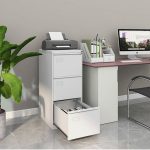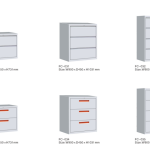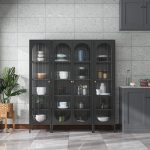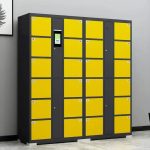In the modern world of furniture design, Knock Down (KD) cabinets have become a popular and practical solution for both consumers and manufacturers. Whether you’re renovating your kitchen, setting up an office, or simply looking for a space-saving storage option, KD cabinets offer versatility. But what exactly are Knock-Down cabinets, and why have they gained such widespread popularity?
What Are Knock Down Cabinets?
Knock Down Cabinets, or KD cabinets, refer to cabinet products that manufacturers transport and sell in a disassembled state, with consumers assembling them at the destination. The core concept behind this design is "flat-pack" packaging, where all components come in a relatively compact box in a flattened form.
These cabinets are typically assembled using various connectors, commonly including:
- Screws and bolts
- Cam locks (eccentric connectors)
- Dowels and positioning pins
- Snap-fit connecting devices
The rise of KD cabinets has transformed the logistics and storage models in the furniture industry. Traditional pre-made furniture takes up a lot of space during transportation and is prone to damage along the way. Flat-pack packaging reduces transportation costs, lowers storage requirements, and reflects these savings in more affordable retail prices.
Significant Advantages of Knock Down Cabinets
Cost-Effective Price Advantage
KD cabinets are typically 20%-40% cheaper than their pre-assembled counterparts. This is mainly due to multiple cost savings from flat-pack packaging:
- Reduced transportation costs: Flat packaging allows more products to be loaded onto vehicles of the same size.
- Optimized storage space: Warehouses can store more inventory, improving space utilization.
- Significantly lower damage rates: Components in a disassembled state are easier to package and protect, reducing the risk of damage during transportation.
Unparalleled Transportation and Storage Convenience
Flat-pack KD cabinets solve many of the pain points of transporting large furniture:
- Can easily pass through narrow stairwells, elevators, and doorways.
- Can be moved by one person, no professional moving team required.
- Weight is distributed across packaging boxes, reducing the difficulty of moving.
- Takes up very little space before assembly, facilitating temporary storage.
Flexibility and DIY Fun
KD cabinets provide consumers with a rare customized experience:
- Internal structure can be adjusted according to personal needs, such as adding or removing shelves.
- Certain functional components can be optionally installed.
- The assembly process itself becomes an interesting DIY experience.
- The sense of achievement upon completion is unmatched by buying pre-made furniture.
Relocation Convenience
For renters or users who need to move frequently, KD cabinets offer great convenience:
- Can be easily disassembled when moving is needed.
- Can be returned to the original packaged state after disassembly.
- Avoids the hassle of dealing with large furniture.
- Significantly reduces relocation costs.
Potential Drawbacks of Knock Down Cabinets and Purchasing Considerations
Time and Labor Costs for Assembly
The biggest feature of KD cabinets also becomes the main barrier to use:
- The assembly process may take several hours or even longer.组装过程可能需要几个小时甚至更长时间。
- Requires a certain amount of physical strength and energy investment.
- Complex assembly instructions can be daunting.
Purchasing Advice: Assess your time and hands-on ability before buying, and choose products that match your skill level. Many brands indicate assembly difficulty levels; beginners should choose products labeled "Easy" or "Medium" difficulty.
Tool and Skill Requirements
Although most KD cabinets come with the necessary tools, there are still some aspects to note:
- Basic tools may not be sufficient to complete all assembly steps.
- Some connection points may require special tools.
- Lack of experience may lead to assembly errors.
Purchasing Advice: Prepare a basic toolkit in advance, including various types of screwdrivers, a hammer, a rubber mallet, a level, and a tape measure. Consider purchasing an electric screwdriver to significantly improve assembly efficiency.
Durability Considerations
The durability of KD cabinets depends on several factors:
- Material quality directly affects service life.
- Assembly quality relates to overall stability.
- The quality of connectors determines reliability in long-term use.
Purchasing Considerations:
- Carefully check product material descriptions, preferably choosing cold-rolled steel plates (0.5-1.0mm thickness is appropriate) or solid wood materials.
- Inquire about surface treatment processes; epoxy powder coating provides better wear and rust resistance.
- Check the quality of hardware connectors to ensure they are sturdy and durable.
- Check the maximum load capacity description to ensure it meets usage needs.
Assembly Complexity Challenges
Not all KD cabinets are easy to assemble:
- Products with complex designs may require professional skills.
- The clarity of the instructions directly affects the assembly experience.
- Incorrect assembly may lead to safety hazards.
Purchasing Advice:
- Choose brands that provide detailed illustrated instructions and video tutorials.
- Read other users' assembly reviews and experience sharing.
- Consider choosing brands that offer professional assembly services (may require additional fees).
How to Choose High-Quality Knock Down Cabinets
Define Needs and Space Planning
Before starting your selection, prepare the following:
- Precisely measure the dimensions (length, width, height) of the placement space.
- Consider the main purpose of the cabinet (storage, display, decoration, etc.).
- Determine style preferences (modern, traditional, industrial, etc.).
- Assess load requirements (approximate weight of items to be stored).
In-Depth Evaluation of Materials and Craftsmanship
Material is the core factor determining the quality of KD cabinets:
Panel Type Analysis:
- Cold-rolled steel plate: High strength, good durability, suitable for office and industrial environments.
- Solid wood: Beautiful and natural, but more expensive, and需要注意湿度变化 (needs attention to humidity changes).
- Particle board: Economical, but poor moisture resistance.
- Medium Density Fiberboard (MDF): Smooth surface, suitable for spraying, but limited load-bearing capacity.
Craftsmanship Details Check:
- Panel thickness should be uniform, edge treatment should be smooth without burrs.
- The surface coating should be even and smooth, without color difference or sagging.
- Pre-drilled hole positions must be precise, with high matching to connectors.
- Hardware accessories should have a certain sense of weight and operate smoothly.
Attention to Certifications and Environmental Standards
High-quality KD cabinets should have relevant quality certifications:
- ISO9001 Quality Management System Certification.
- ISO14001 Environmental Management System Certification.
- Panel formaldehyde emission等级 (level) (preferably choose E0 level or F★★★★).
- Paint heavy metal content complies with safety standards.
Reference User Reviews and Brand Reputation
Before making a final decision, be sure to:
- Carefully read other users' assembly experience reviews.
- Pay attention to long-term use feedback on product quality and durability.
- Understand the brand's after-sales service policy.
- Check if配件供应充足 (parts supply is sufficient) (avoid future repair difficulties).
Understand Packaging and After-Sales Service
A complete after-sales service system includes:
- Sturdy packaging design (standard export cartons lined with foam plastic).
- Clear and easy-to-understand assembly instructions.
- Sufficient spare parts.
- Reasonable warranty period (at least 1 year or more).
- Convenient customer service channels.
Application Scenarios of Knock Down Cabinets
The flexibility of KD cabinets makes them suitable for various environments:
Home Spaces:
- Kitchen cabinets and storage cabinets.
- Study room bookshelves and filing cabinets.
- Living room TV cabinets and display cabinets.
- Bedroom wardrobes and bedside cabinets.
- Children's room storage solutions.
Commercial and Public Spaces:
- Hotel guest room furniture.
- Apartment matching cabinets.
- Office file storage systems.
- Hospital medical equipment cabinets.
- School laboratory storage cabinets.
- Supermarket shelves and display cabinets.
- Factory tool storage cabinets.
Specific Professional Uses:
- File and archive management systems.
- Server and network cabinets.
- Laboratory-specific storage cabinets.
- Garage tool storage systems.
- Retail display solutions.
Frequently Asked Questions (FAQ)
Q: What is the difference between KD cabinets and RTA cabinets?
A: The terms KD (Knock Down) and RTA (Ready-To-Assemble) are often used interchangeably in the industry, both referring to furniture that requires assembly. The subtle difference is that KD emphasizes the "disassembled" state, while RTA emphasizes the "ready to assemble" concept. In actual products, this distinction has become blurred.
Q: What tools are usually needed to assemble KD cabinets?
A: Most KD cabinets only require basic tools: a Phillips screwdriver, hex keys (usually provided with the product), a hammer. But it is recommended to prepare an electric screwdriver, a level, and a rubber mallet. Complex products may require special installation tools, which are usually included in the packaging.
Q: What should I do if I damage a part during assembly?
A: First, contact the retailer or manufacturer. Most reputable brands offer parts replacement services, some even provide missing or damaged parts for free. Keep your purchase receipt and product information handy for quick processing.
Q: What is the load-bearing capacity of KD cabinets like?
A: Load-bearing capacity varies depending on material, structure, and design. Metal KD cabinets usually have stronger load-bearing capacity; high-quality products like server cabinets can have a fixed load capacity of up to 3000 pounds (1360.8 kilograms). Be sure to check the maximum load data in the product specifications before purchasing.
Q: How can I make KD cabinets more durable?
A: Ensure all connectors are correctly and tightly connected during assembly; regularly check and tighten any loose screws; avoid placing in overly humid environments; do not exceed the maximum load limit; use wall fixing devices to prevent tipping.
Conclusion
Knock Down Cabinets, with their unique economy, transportation convenience, and assembly flexibility, occupy an important position in modern home and commercial spaces. However, choosing KD cabinets also requires a rational view of their potential challenges. The final choice should be based on your personal budget constraints, time availability, skill level, and expectations for durability.
We encourage you to do thorough research before purchasing, carefully measure your space, read product reviews carefully, and choose reputable brands. No matter what type of KD cabinet you ultimately choose, the right choice and careful assembly will bring you years of satisfactory use experience.





